Melissa Pesci and Amin Mojtahedi of HGA surveyed their clients to understand what makes a productive and happy workplace and share six scalable ideas.
Many organizations have been exploring workplace design solutions that can attract employees back to the office. However, an amazing physical space alone can’t achieve that. Strategic employee or company-led programs, tools that help employees to connect and care for themselves, well-communicated protocols, and authentically operationalized company cultures and values are now key ingredients that can unlock the potentials of physical space and turn it into a meaningful part of employees’ work-life landscape. We’ve surveyed our clients to understand what makes a productive and happy workplace.
Placing Mental-Physical Health at the Core
Since the pandemic began, health has taken a higher priority, including using time previously spent commuting on eating healthier, spending more time outside, and exercising—which can all lead to a stronger immunity system and better health.
Stigmas around mental health have started to dissolve as awareness and support takes center stage. Since wellness is a vast topic, interventions regarding space and protocol could vary from organization to organization, so it’s important to let company culture and human-centered research guide what will resonate most with employees. Solutions across companies vary based on budget, size, and location.

Need a place to start with your organization? Here are six scalable happy office ideas that can be tailored based on local parameters:
1. Launch Wellness Programs, Not Just Spaces
Introduce a wellness program that is educational, with a specific focus each month, such as mental health services, financial health services, and nutrition with tips, incentives, and/or guest speakers. Provide well-lit, acoustically private, and comfortable spaces for people to use when video conferencing with the service.
Exercise has a variety of physical and mental health benefits. Connect employees with local gyms by offering a reimbursement program for gym membership. If space and budget allow, companies can incorporate a full gym that is managed with onsite locker room, products, towel service, nutritionists, trainers, and group classes. Group classes can have the added benefit of building community that can transcend departments or projects and can give employees the incentive to be more energized and productive for the rest of their workday.
Short on space, or does your company culture favor the outdoors? Consider incorporating a bike program that motivates employees to bring in their own bikes and provides loaners to help people get outside. Keep in mind that having a place to shower after exercise is necessary for those who plan to use these facilities or programs throughout the day.
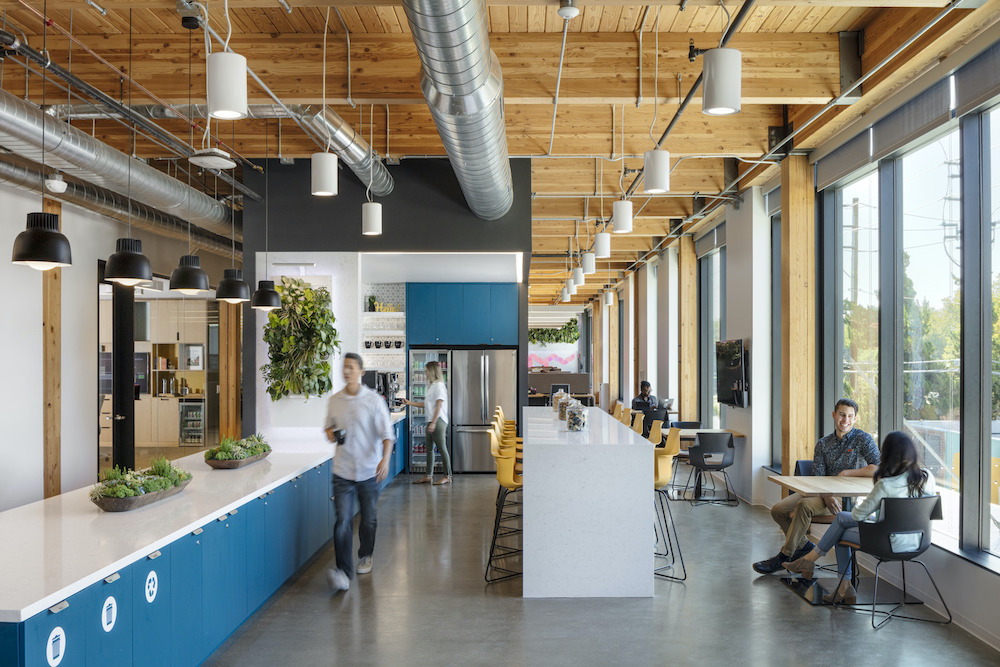
2. Eat to Connect
What we eat contributes to how we feel and perform. Provide a space for employees to prepare food in addition to offering fresh, healthy food in the office for employees who are on the go. Encourage employees to avoid scheduling meetings during meals to give them time to eat, whether that is in the office or out. Create a space for breaks that is near a window or outdoor space to incorporate as much natural light and fresh air as possible.
Employees love special pop-up snacks like boba tea, frozen yogurt, etc. Encourage people to take a break, recharge outside of typical meal hours and take the time to connect with co-workers by offering snack pop-ups on a semi-regular basis. Locating these pop-ups outside or near natural light and in well-trafficked areas can draw more people in and encourage them to linger and interact with co-workers.
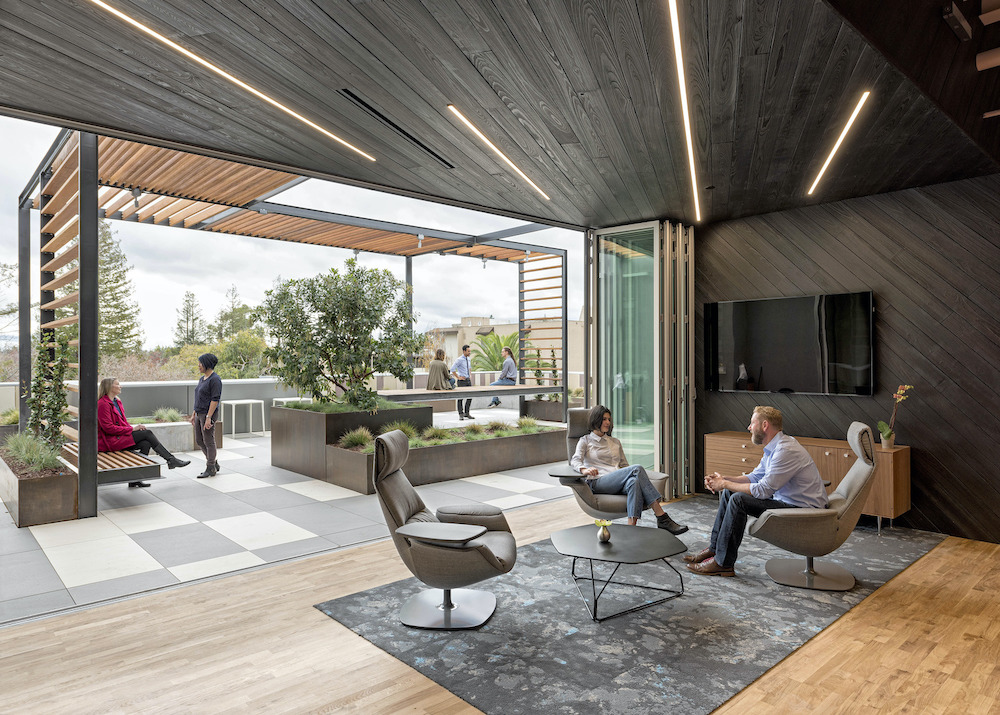
3. Draw Nature In, Encourage People to Go Out
Biophilia, daylight, and fresh air reduce stress levels, help people to recharge, and make employees feel more alert. If the workplace doesn’t have the potential to support biophilic features, start mapping out urban natural resources nearby and ways of getting to them.
Numerous studies confirm the intuitive benefits of nature in the workplace. Nature restores our cognitive functioning and sense of wellbeing. That’s why people are intuitively drawn to spaces that offer access to greenery, water features, sunlight, and fresh air—whether visually through large windows or entries leading to outdoor landscaping. Lack of natural features—even something as simple as indoor potted plants—can discourage people from using a space.
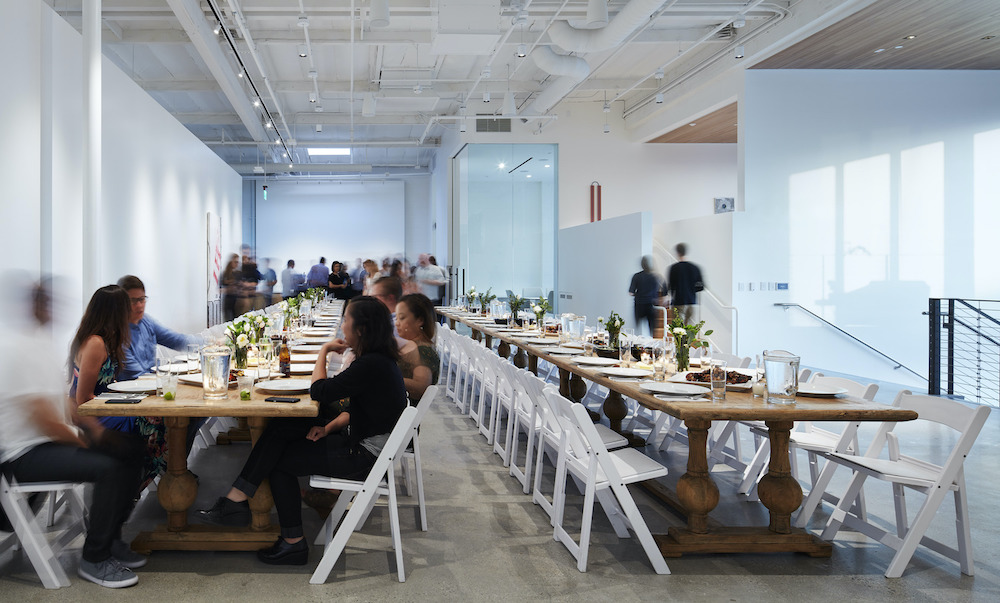
4. Celebrate Achievements Together
A sense of community and feeling valued are paramount to motivation as well as retention. Various types of celebrations can bring people together and give them a reason to be in the office. Culture is key to authentically demonstrating that employees are valued as well as leaders that celebrate progress and major achievements. Allocate a budget for food or activities and provide space for these celebrations. These spaces can be separated from focused workspaces to limit distractions to others and allow celebrators to linger and form stronger bonds.
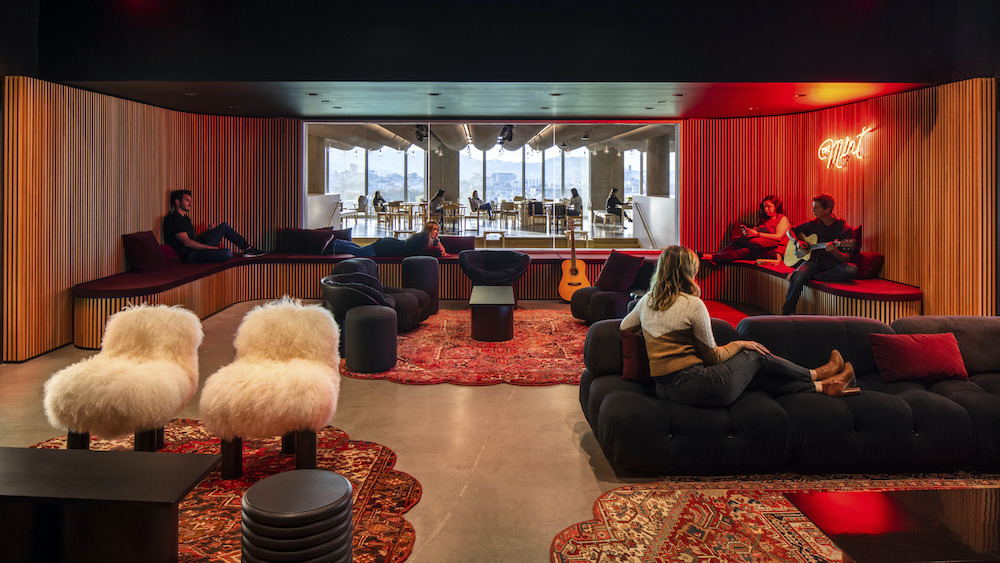
5. Build Team Cohesion
Everyone recharges differently, some need to get away and be alone, while others recharge by catching up with co-workers. An organization’s first step should be gaining an understanding of their culture to prioritize various spaces that allow employees to recharge in ways that suit them best. Pair the spaces with protocols to encourage their use; companies can send calendar invites for a 10-minute stretch break or incorporate a puzzle or game table with seating and signage in a convenient area that encourages use. Create office-wide buy-in by having leadership attend sessions and invite others on their teams to join them in using these spaces.
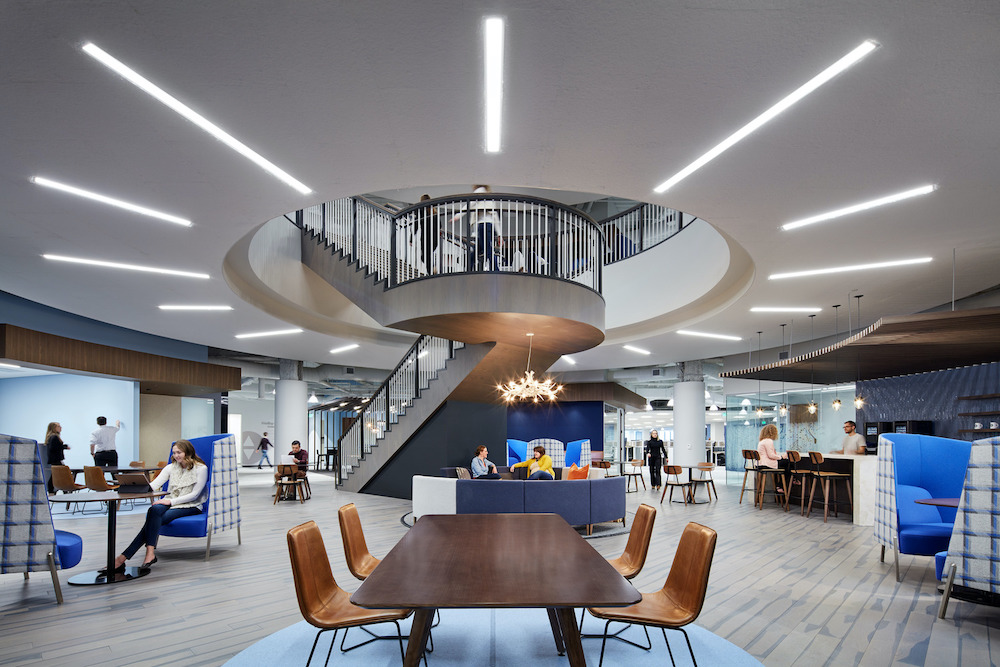
6. Schedule in Flexibility
Whether to be more innovative, productive, or to create social bonds to maximize time that is spent working remotely, the physical office is a place for people to come together. While many employers are suggesting a certain number of days “in the office,” this can fall flat if part of the team is still hybrid. Team members may not be able to contribute equally if they are not there in person. Even with equal access to technology, proximity bias exists, and without training and consistent awareness even the most well-intentioned team may struggle to overcome it. Leaders can work with teams to coordinate days in the office as well as access to each other. Team space can look different depending on the type of team and work. This can include signage to make it easier for employees to know where to go, spaces to leave physical collateral hung up, technology that enables in-person sharing, and different levels of enclosure depending on typical volume levels and need for privacy.
Looking Forward
Many companies discovered that their teams can still be productive while working remotely during the pandemic. Now the challenge is encouraging people to return to the office—even within a hybrid model. The need for in-person collaboration and social interaction is a strong motivation to return to the office. Yet people have discovered that the flexibility of working from home has compelling benefits, as well. Companies must be intentional about reimagining their office environment to transition from a remote to on-site work model. Our research offers suggestions for how to start. But the first step must always be to know your own corporate culture and know your own employees’ needs to create a happy workplace that allows your company to thrive.

